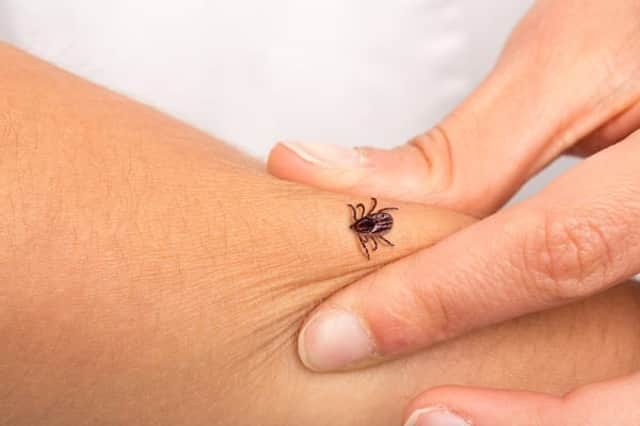How to avoid contracting Lyme disease from tick bites this summer


The summer season is a great time to make the most of the great outdoors, with things like gardening and hiking all much easier and more enjoyable in warmer weather.
But spending more time outside means a heightened risk of tick bites, which can, in some cases, result in Lyme disease.
What are ticks?
Advertisement
Hide AdAdvertisement
Hide AdTicks are tiny, spider-like creatures which feed on the blood of animals and humans, and are commonly found in woodland and moorland, particularly in areas with long grass.
They don't jump or fly, but will climb on to you if you brush against something they're on. The tick will then bite and attach to the skin, where they will feed on blood for several days before dropping off.
Ticks are commonly found in woodland, moorland and long, grassy areas (Photo: Shutterstock)
Ticks are most active between spring and autumn and are widespread across the UK, but the most high-risk areas include grassy and wooded areas in southern England and the Scottish Highlands.
What are the health risks?
Advertisement
Hide AdAdvertisement
Hide AdLyme Disease can sometimes be transmitted by the bite of a tick which is infected with borrelia burgdorferi, although only around 10 per cent of ticks carry the harmful bacteria.
According to Public Health England, you are more likely to become infected if the tick remains attached to your skin for more than 24 hours, but since they are small and their bites are not painful, they can be easy to miss.
The NHS advises seeking treatment from your GP promptly if you spot any of the following symptoms:
Some people can develop more severe symptoms of Lyme disease months or even years later if treatment is delayed, including:
Advertisement
Hide AdAdvertisement
Hide AdIf your GP suspects you have Lyme disease, they will prescribe a three week course of antibiotics to treat it.
Where do ticks usually bite?
Ticks prefer moist areas of the body and are often found in harder to see areas of the body, such as in the folds of the skin.
Ticks can be removed with fine-tipped tweezers or a tick-removal tool (Photo: Shutterstock)
Areas including the groin, armpits, back of the knees and on the scalp are common areas for ticks to attach.
How to get rid of a tick
Advertisement
Hide AdAdvertisement
Hide AdTo remove a tick safely, the NHS advises taking the following steps:
How to avoid ticks
If you have been walking through high risk areas, such as woodland or long grass, it is advisable to check yourself for ticks as a precaution, paying close attention to folds in the skin and the hairline.
To reduce the risk of being bitten, take the following precautions when heading outdoors: